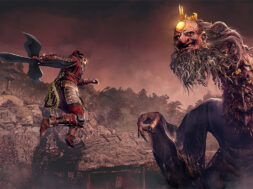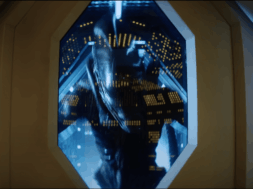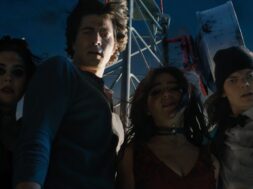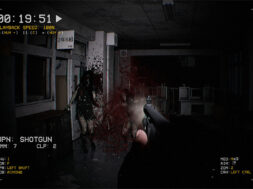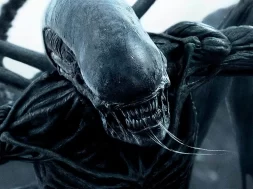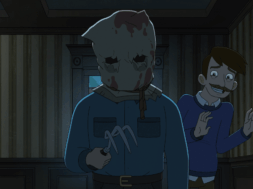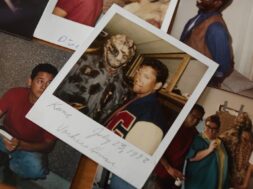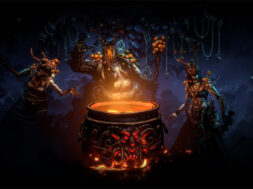Leave it to Stephen King to take otherwise benign things like a Plymouth Fury or loveable Saint Bernard and turn them into objects of unrelenting terror. When you think of the word monster, you usually picture something much more frightening and supernatural, but in the ‘80s (and the hands of King) anything could be a monster. Including a rabid dog.
The setup is simple; the Camber family dog gets bitten by a rabid bat while chasing a rabbit one day. Joe Camber happens to be the Trenton family’s car mechanic, and their Ford Pinto is on the fritz. The Pinto is the least of the Trenton’s concerns, though, as wife Donna (Dee Wallace) has been having an affair with a former high school sweetheart. It adds further stress to her husband Vic (Daniel Hugh-Helly), who’s dealing with severe pressures with work. Naturally, their young son Tad (Danny Pintauro) is caught in the middle. All of that pales in comparison to the horror of Donna having to fight for her and her son’s life when the Pinto strands them at the Cambers’ place with their homicidal, rabid beast of a dog while Vic is away on business.

While Cujo as we know it is filled with suspense and anguish, we very nearly received a drastically different take. Director Peter Medak (The Changeling), along with his Changeling screenwriter Barbara Turner, sought to hone in on the supernatural elements from King’s novel. In the novel, young Tad is plagued by nightmarish visions of a monster in his closet long before he encounters Cujo. Turner’s script focused on that part, and would’ve had the ghostly apparition possess Cujo. Two days into filming, though, well into an elaborate shoot with complicated angles, producer Dan Blatt’s patience wore thin and he fired Medak along with D.P. Tony Richmond. King recommended director Lewis Teague, having been impressed with his previous film Alligator. Then the subsequent co-screenwriter, Don Carlos Dunaway, cut out anything pertaining to the supernatural. Between this move and Medak’s termination, Turner became so infuriated she insisted her credit on the film be a pseudonym.
Teague’s experience on Alligator, in which he had to shoot around a 26-foot long rubber alligator that didn’t work as it was supposed to as well as real alligators on miniature sets, meant he was well suited to working with not so cooperative animal-based movie monsters. For Cujo, he used a variety of techniques. There were six actual Saint Bernards, each one trained to handle a specific task. Some lunged, some barked on command, and some simply ran for a distance. They’re not an easy breed to train, and dog trainer Karl Miller initially tried to persuade Teague to go with an alternate breed. Despite the menacing nature of Cujo, many of these dogs couldn’t stop wagging their tails (and had to be strapped down as a result). But Teague’s direction means you luckily don’t notice this much on screen unless you’re looking for it specifically.

There were also mechanical Saint Bernards, and mechanical dog heads – created by special visual effects makeup artist Peter Knowlton – to handle the more dangerous stuff like the shots that had Cujo ramming his head into the car. And of course, stunt man Gary Morgan also doubled for Cujo in certain scenes. Teague even had a backup dog suit for a Labrador, but it ultimately went unneeded.
Teague wasn’t done working with animals in horror, either; his follow up film to Cujo was Stephen King anthology Cat’s Eye. From alligators, to dogs, to cats, Teague might be the reigning champ of animal horror of the ‘80s. As for Cujo, his decision to scrap the supernatural might ruffle the feathers of die-hard Constant Readers, but it made the Trenton family’s fight for survival much more harrowing in its realness. Donna and Tad have to contend with one nasty Saint Benard (wagging tails and all), dehydration, and heat stroke.
